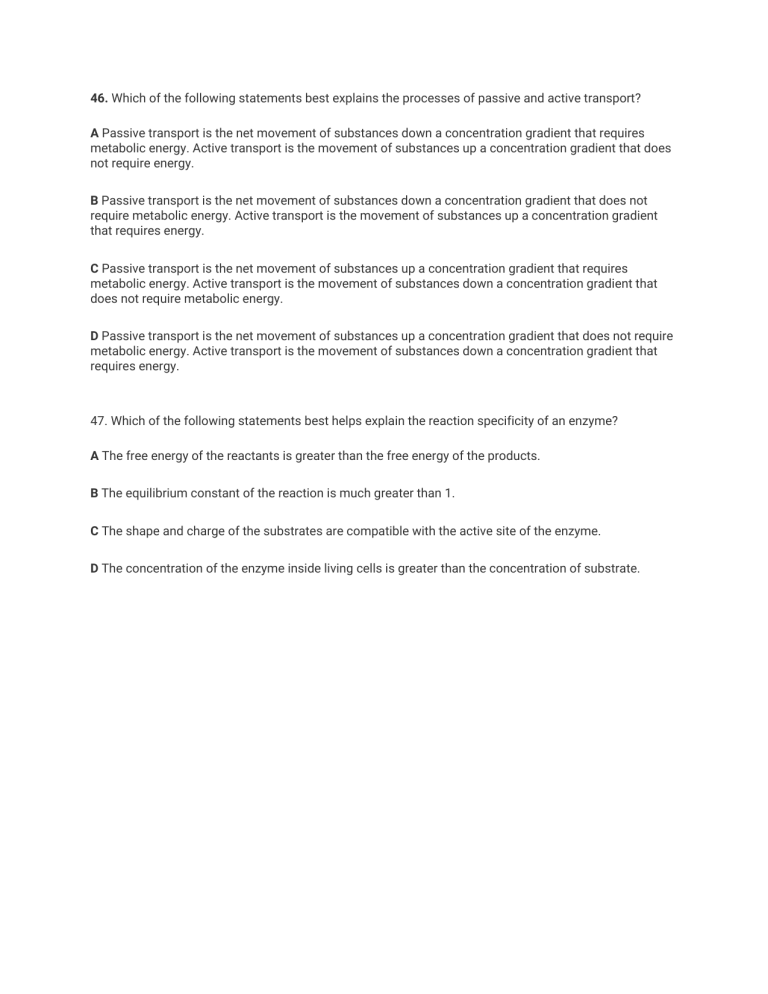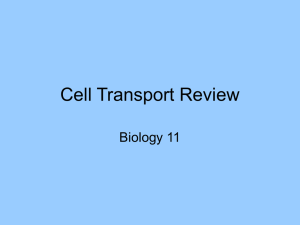
46. Which of the following statements best explains the processes of passive and active transport? AP assive transport is the net movement of substances down a concentration gradient that requires metabolic energy. Active transport is the movement of substances up a concentration gradient that does not require energy. B Passive transport is the net movement of substances down a concentration gradient that does not require metabolic energy. Active transport is the movement of substances up a concentration gradient that requires energy. C Passive transport is the net movement of substances up a concentration gradient that requires metabolic energy. Active transport is the movement of substances down a concentration gradient that does not require metabolic energy. D Passive transport is the net movement of substances up a concentration gradient that does not require metabolic energy. Active transport is the movement of substances down a concentration gradient that requires energy. 47. Which of the following statements best helps explain the reaction specificity of an enzyme? A The free energy of the reactants is greater than the free energy of the products. B The equilibrium constant of the reaction is much greater than 1. C The shape and charge of the substrates are compatible with the active site of the enzyme. D The concentration of the enzyme inside living cells is greater than the concentration of substrate. 48. A model of the plasma membrane showing several biological molecules, including a transmembrane protein, is shown in Figure 1. Figure 1. Phospholipid bilayer with transmembrane protein Which statement best explains why correct protein folding is critical in the transmembrane protein shown above? A I nteractions of the hydrophobic and hydrophilic amino acids help to anchor the protein in the membrane. B Interactions of the peptide bonds of the protein with the membrane will affect the rate at which substances can cross the membrane. C Interactions of the protein and phospholipids increase membrane fluidity. D Interactions of the quaternary structure of the protein will increase hydrogen bonding in the membrane and make the membrane less fluid.


